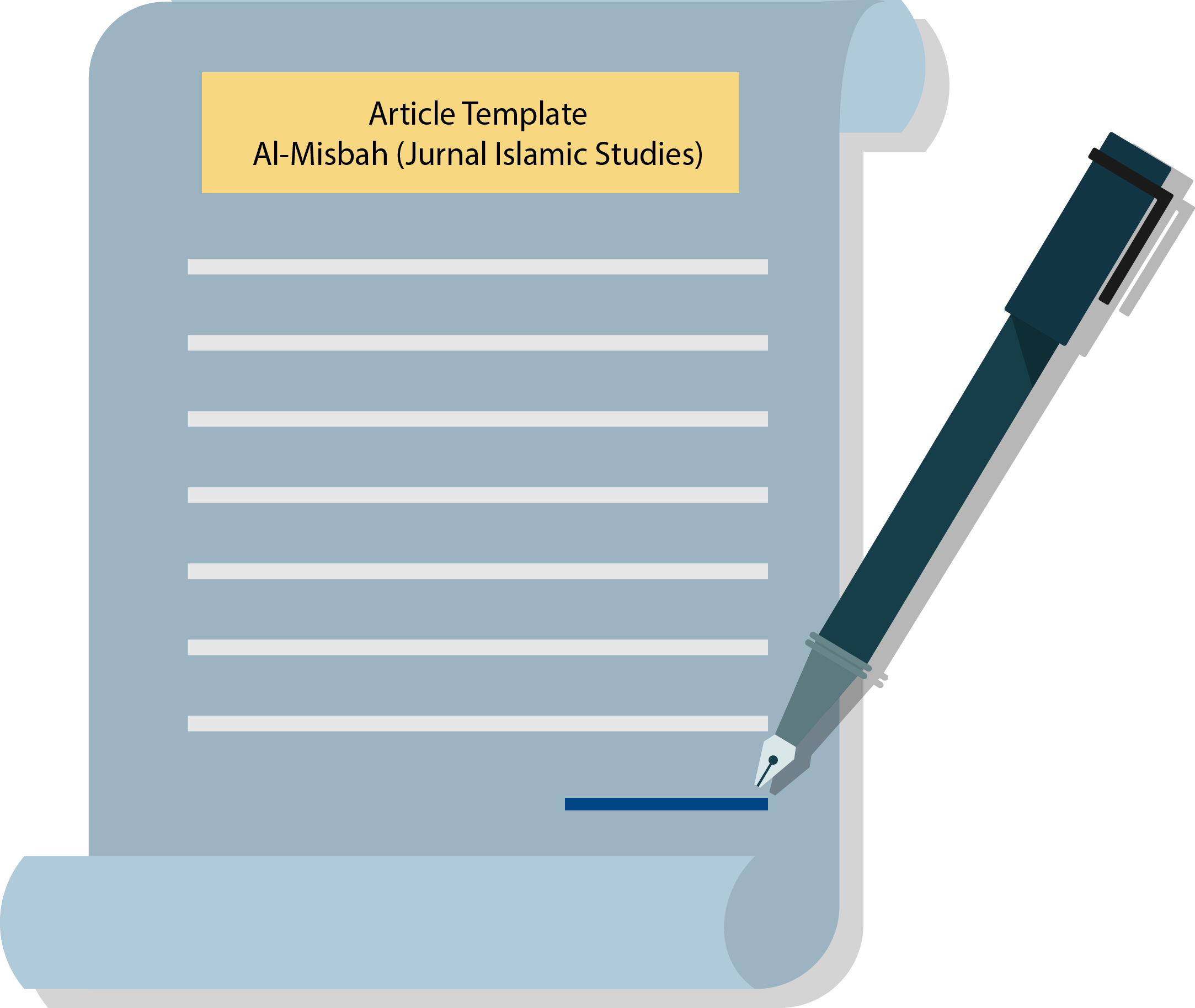Innovation of Using Hybrid Modules in Muhammadiyah Elementary School in Sleman as Alternative Distance Learning Solutions in the Covid-19 Pandemic
DOI:
https://doi.org/10.26555/almisbah.v10i1.5275Keywords:
Innovation, Hybrid Modules, Muhammadiyah Education, Distance Learning , Covid-19Abstract
The pandemic has turned the education and learning process into distance learning and learning from home. These changes do not necessarily run smoothly. However, there are many obstacles and problems. These include internet network access, the absence of quotas and the process of changing without being conditioned before. Not to mention the complaints from parents who usually leave it entirely to the school, but with the pandemic, parents seem to be "forced" to be involved in the distance learning process. One of the innovations developed by the Muhammadiyah School in Sleman at the elementary and junior high school levels is using a hybrid module. This research is a descriptive qualitative research on the application and effectiveness of the hybrid module among students of SD Muhammadiyah SMP in Sleman Regency. The number of respondents who were given a questionnaire on the implementation and effectiveness of the module was selected to represent all sub-districts in Sleman Regency, totalling 17 sub-districts. So that the number of research targets consists of 34 principals, students, and parents of students from all Muhammadiyah elementary schools throughout Sleman Regency, totalling 98 respondents. The results of the study reveal the innovation of the Hybrida module at Muhammadiyah Middle School in Sleman as an alternative to Distance Learning solutions during the Covid-19 pandemic in Sleman Regency. All 15,407 Muhammadiyah elementary school students and 9,063 Muhammadiyah junior high school students use the module as a learning resource for teachers, students and parents and guardians of students. The effectiveness of the innovation of using Hybrid Modules at Muhammadiyah Middle School in Sleman as an Alternative to Distance Learning Solutions During the Covid-19 Pandemic, there were many benefits. The benefits of hybrid modules are also discussed in this article.
References
Afriansyah, A. (2020). Covid-19, transformasi pendidikan dan berbagai problemnya. Pusat Penelitian Kependudukan LIPI, 24.
Arikunto, S. (2010). Prosedur Penelitian Suatu Pendekatan Praktik. Rineka Cipta.
Bhavya Bhasin, Gautam Gupta, & Sumedha Malhotra. (2021). IMPACT OF COVID-19 PANDEMIC ON EDUCATION SYSTEM. EPRA International Journal of Environmental Economics, Commerce and Educational Management. https://doi.org/10.36713/epra6363
Gloria Tam, D. E.-A. (2020). 3 ways the coronavirus pandemic could reshape education. World Economic Forum.
Hermanto, Rai, N. G. M., & Fahmi, A. (2021). Students’ opinions about studying from home during the COVID-19 pandemic in Indonesia. Cypriot Journal of Educational Sciences. https://doi.org/10.18844/CJES.V16I2.5627
Luthra, P., & Mackenzie, S. (2020). 4 ways COVID-19 could change how we educate future generations.
MacKenzie, O., Christensen, E. L., & Rigby, P. H. (1968). American Council on Education., & National Commission on Accrediting. In Correspondence instruction in the United States: A study of what it is, how it functions, and what its potential may be.
Miles, M. B., & Huberman, A. M. (1984). Drawing valid meaning from qualitative data: Toward a shared craft. Educational Researcher, 13(5), 20–30.
Moleong, L. J. (2008). Metodologi Penelitian Kualitatif eds. In Revisi. Bandung: PT Remaja Rosdakarya Offset.
Nagarajan, R., Velmanirajan, K., & Kanna, K. S. (2013). Integrating Digital Technologies in Teaching Learning Process. I-Manager’s Journal of Educational Technology. https://doi.org/10.26634/jet.10.3.2499
Novianti E, Fatkhia Alda Rizka, & Nuryana Zalik. (2020). Analisis Kebijakan Pembelajaran PAI di Masa Pandemi: Peluang dan Tantangan. Jurnal Pendidikan Islam.
Seameo Kemdikbud. (2020). Tantangan pendidikan karakter dalam pendidikan jarak jauh.
Setiabudhi, D. O., Palilingan, T. N., & Yunus, A. (2020). Overcoming of COVID-19 Transmission: The Fulfillment of Right to Health and Education. Indian Journal of Forensic Medicine & Toxicology, 14(4).
Srivastava, K., & Dey, S. (2018). Role of Digital Technology in Teaching-Learning Process. IOSR Journal Of Humanities And Social Science (IOSR-JHSS.
Sugiyono. (2013). Metode Penelitian Pendidikan: Pendekatan Kuantitatif, Kualitatif, dan R & D. Alfabeta.
Sumarni, R. A., Bhakti, Y. B., Astuti, I. A. D., Sulisworo, D., & Toifur, M. (2020). Analisis Kebutuhan Guru SMP Mengenai Metode Pembelajaran Flipped Classroom. ORBITA: Jurnal Kajian, Inovasi Dan Aplikasi Pendidikan Fisika, 6(2), 236–242.
UNESCO. (2020a). UNESCO Covid-19 Education Response. UNESCO, United Nations Educational, Scientific and Cultural Organization.
UNESCO. (2020b, March). Multilateral Education Platform’s meeting (online). En.Unesco.Org.
Zulherman, Z., Nuryana, Z., Pangarso, A., & Zain, F. M. (2021). Factor of zoom cloud meetings (ZCM): Technology adoption on the pandemic covid-19. International Journal of Evaluation and Research in Education (IJERE), 10(3), 816–825. https://doi.org/10.11591/ijere.v10i3.21726
Downloads
Published
How to Cite
Issue
Section
License
Copyright (c) 2022 Abdullah Mukti, Agus Suroyo , Hasanudin

This work is licensed under a Creative Commons Attribution-ShareAlike 4.0 International License.
Authors who publish with Al-Misbah agree to the following terms:
- Authors retain copyright and grant the journal right of first publication with the work simultaneously licensed under a Creative Commons Attribution License (CC BY-SA 4.0) that allows others to share the work with an acknowledgment of the work's authorship and initial publication in this journal.
- Authors are able to enter into separate, additional contractual arrangements for the non-exclusive distribution of the journal's published version of the work (e.g., post it to an institutional repository or publish it in a book), with an acknowledgment of its initial publication in this journal.
- Authors are permitted and encouraged to post their work online (e.g., in institutional repositories or on their website) prior to and during the submission process, as it can lead to productive exchanges, as well as earlier and greater citation of published work.

This work is licensed under a Creative Commons Attribution-ShareAlike 4.0 International License.



